17 Types of Ducks Found in Oregon (With Pictures)
Last Updated on
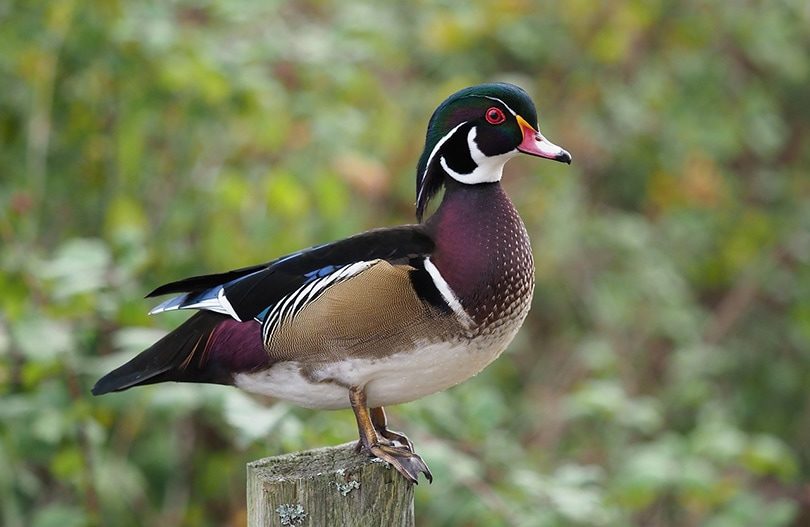
Head to almost any body of water, and you’re most likely going to see a few kinds of ducks floating around. While Oregon’s official state animal may be the beaver, some people assume it is actually a duck because of the famous mascot at the University of Oregon. Regardless, the Oregon Department of Fish & Wildlife explains how they have over 17 duck breeds that currently call Oregon their home.

The 17 Most Common Ducks in Oregon
1. American Wigeon

You won’t see another duck twist and turn through the air like the American Wigeon. These birds are easily alarmed but respond to both whistles or mallard calls. Males and females both have bluish bills with black tips. The drakes have white on the top of their heads. They also have green eye stripes, white bellies, and purplish breasts and flanks. The hens are more grow with white patches on the wings.
American Wigeons can be found in coastal areas. They prefer shallow habitats such as marshes and wet meadows.
2. Canvasback
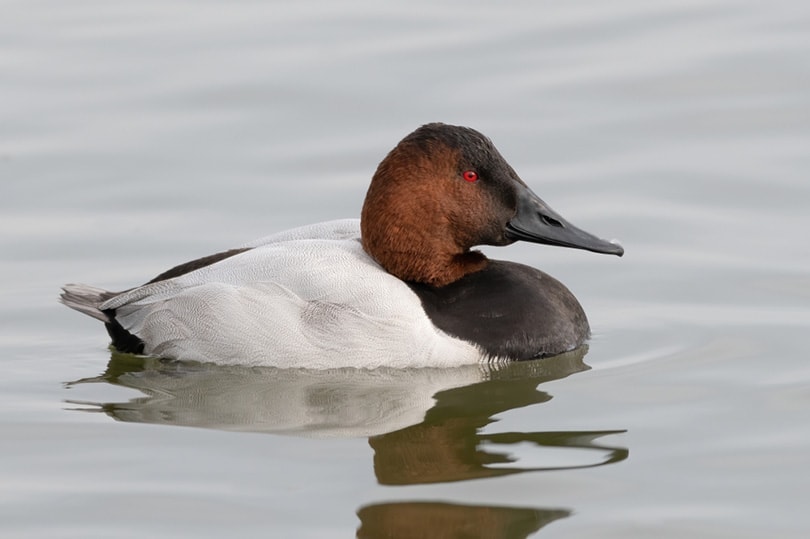
Of all the non-sea ducks found in Oregon, the Canvasback is the largest. The drakes have reddish heads and necks while their breasts are black. The rest of their bodies are white or dark gray. Most hens are grayish-brown with darker brown heads. Canvasback ducks live in bays and marshes where there is an abundance of aquatic vegetation and invertebrates to eat.
3. Eurasian Wigeon

The Eurasian Wigeon is considered a foreigner in Oregon. They are usually found in this state among the wintering flocks of the American Wigeons. Males have reddish-brown heads with gray flanks, and hens look very similar to American Wigeons.
4. Gadwall

The Gadwall are dabbling ducks that are usually submerged within the aquatic vegetation. They feed far from the shorelines and can be found in eastern Oregon very early in the season. Adult males have black bills, gray bodies, and buff heads. The females are mostly brown with spotted, yellow-orange bills and black edges.
5. Goldeneyes
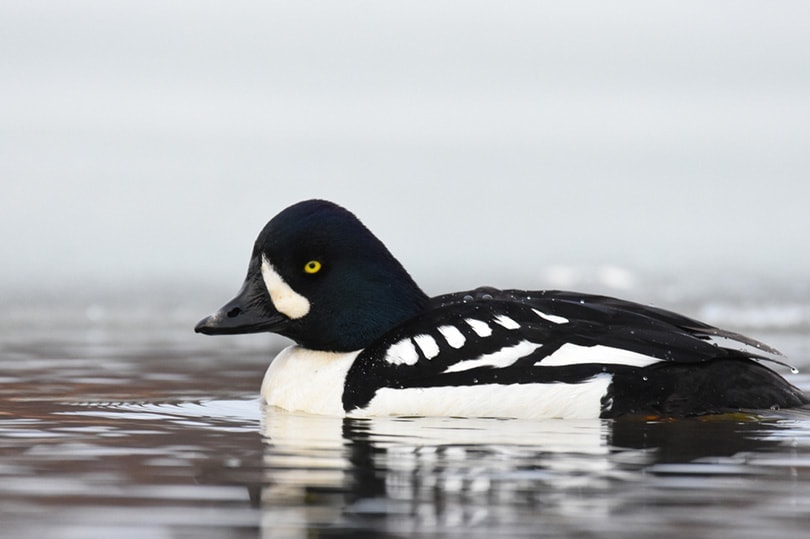
The two types of Goldeneye ducks found in Oregon are the Barrow’s Goldeneye and the Common Goldeneye. These ducks are diving birds and are usually scattered across many lakes and reservoirs. They don’t tend to overwinter here, but instead spend their winters in South America.
6. Harlequin
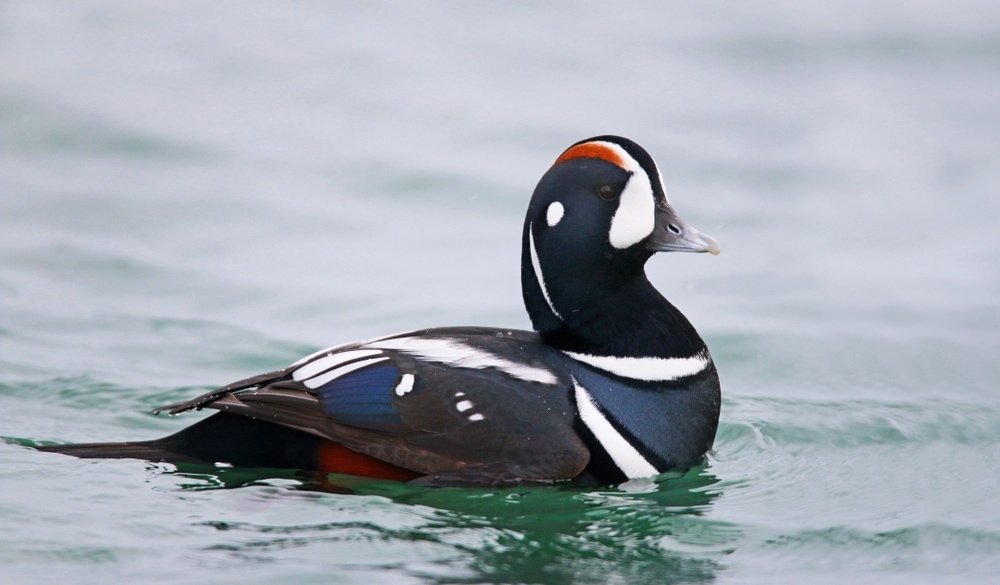
Harlequin Ducks are a sight to see with their slate-blue plumage that has accents of white stripes and dots. Most of these duck breeds are found on fast-water rivers in the summer in western Oregon.
7. Long-Tailed Duck
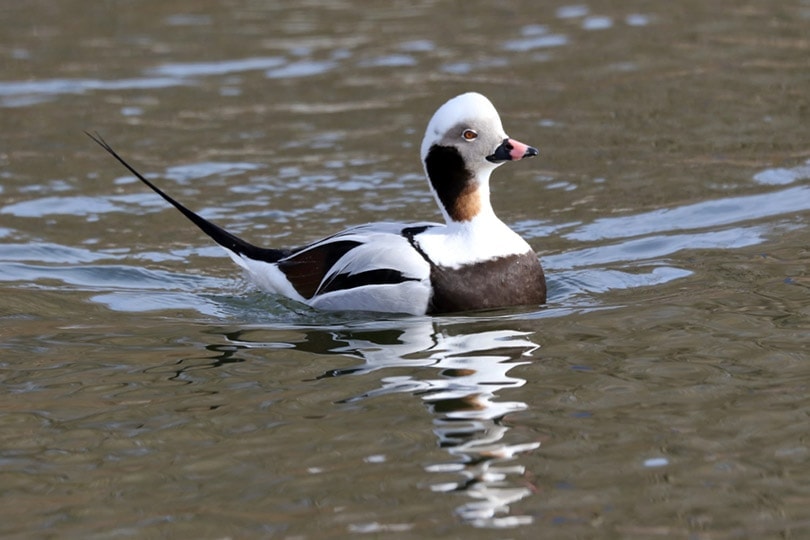
This duck’s range mainly sticks to the southern edge of Oregon, meaning that they aren’t particularly common visitors to the state. The Long-tailed drakes are mostly white except for the black breast and middle of the back. Their wings are also dark and long. Females are usually darker overall with lighter heads. Find Long-tailed ducks around the Columbia River and other lakes in southern parts of the state.
8. Mallard
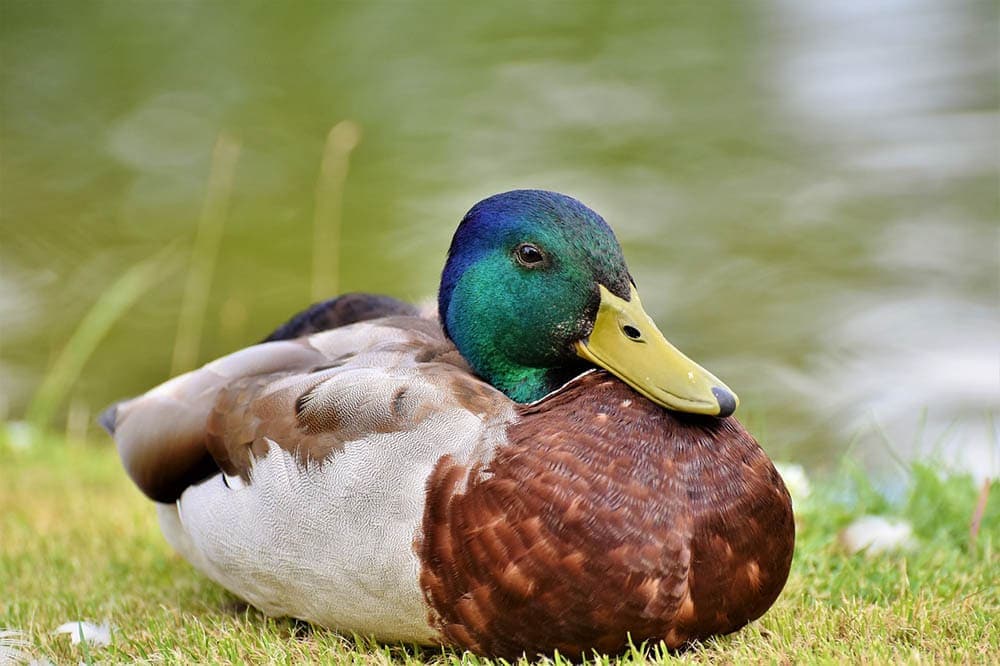
Most people from the United States are familiar with Mallards. These birds have adapted to most urban settings and are one of the most widespread waterfowls in the country. Males are the easiest to identify because of their iridescent green heads. The females are mottled brown with dark stripes through their eyes. Mallards like to breed and winter in Oregon and many other states in the country.
9. Mergansers

The Merganser duck is one of the only ones in the state that specialize in catching and eating fish. They swim underwater and use their long, thin bills to catch and hold their prey. The different types of Mergansers that live here are the Common Merganser, Hooded Merganser, and Red-breasted Merganser.
10. Northern Pintail

Northern Pintail ducks are graceful while they speed through the air. They usually find themselves in western parts of Oregon during their winter migration. They prefer open habitats of water fields, ponds, and large marshes. They are quite rare but most abundant in the early parts of fall.
11. Northern Shoveler

You might have heard the Northern Shoveler called the Spoonbill duck because of its unique bill that gets wider on the end, like a spoon. The drakes have dark, iridescent green heads with white breasts and red bellies. The brown hens have blue patches on their bodies. These are dabbling ducks that prefer to be around lakes and ponds so they can use their bills to sift through the water.
12. Redhead

Redhead ducks are large, fast-flying diving birds. They get their name from their red heads and black breasts. These are locally common breeds found in many marshes and wetlands of Oregon. They are less common during winter because they migrate south. Many people consider them to be trophy ducks.
13. Ring-Necked Duck

Another beautiful duck breed is the Ring-necked duck that has a white crescent on its side and a white-ringed bill. They are widespread during the winter months and prefer fresh water to saltwater.
14. Scaup

There are two types of Scaup that call Oregon home: the Greater Scaup and Lesser Scaup. Greater Scaup prefers saltier environments and is the same size as Redheads. They are bigger in size and have white wing strips compared to Lesser Scaup. The Lesser Scaup is one of the most prevalent breeds across North America. They are also more likely to be seen near freshwater habitats.
15. Scoters

Scoters move along the east coast in flocks so that they can feed on crabs, fish, mollusks, and some vegetation. The types of Scoters that visit Oregon are the Black Scoter, Surf Scoter, and White-winged Scoter. All three kinds have unique-shaped bills that are arched near the base and come down to a curved point.
16. Teal

Would it surprise you if we told you that Teal ducks get their name because of their blue plumage? While there are three different types of Teal bre
eds found here, each of the drakes shows vibrant shades of teal on its feathers.
17. Wood Duck

The vibrant colors and patterns are what make the Wood duck stand out among the rest. These birds are rarely mistaken for others. They have iridescent chestnut fur with green and blue patterning. The hens also have a unique white pattern around their eyes.
Wood ducks are found in wooded swamps, ponds, and rivers. They mostly feed on seeds but sometimes supplement their diets with insects, crustaceans, and aquatic plants.

Conclusion
Did you ever think that there would be so many beautiful different duck breeds found in the state of Oregon alone? Oregon is a place that offers various kinds of habitats to a wide range of animals. While some prefer to live near shallow lakes, others travel up and down the coasts looking for sea creatures to eat. It’s amazing how much diversity is available to you if you just open your eyes while exploring this great state.
Featured Image Credit: wam17, Pixabay
Table of Contents
About the Author Hallie Roddy
Hallie is a proud nature and animal enthusiast and has been for as long as she can remember. She attributes her passion for the environment and all its creatures to her childhood when she was showing horses on weekends and spending her weeknights devoting her attention to her pets. When Hallie isn’t using her degree in English with a writing specialization to spread informative knowledge on pets and animals, you can find her snuggled up on the couch reading books or watching nature documentaries with her own pets.
Related Articles:
Monocular vs Telescope: Differences Explained (With Pictures)
10 Types of Hummingbirds in Arkansas (With Pictures)
8 Types of Hummingbirds in Nebraska (With Pictures)
5 Types of Hummingbirds in Idaho (With Pictures)
3 Types of Hummingbirds in Mississippi (With Pictures)
8 Types of Hummingbirds in Kansas (With Pictures)
5 Types of Hummingbirds in West Virginia (With Pictures)
5 Types of Hummingbirds in Ohio (With Pictures)
